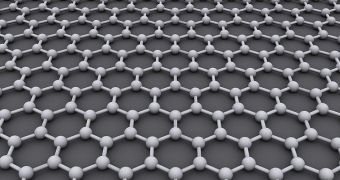When graphene rips under stress, it does so in a very specific pattern, which follows the lines of least resistance. It was previously unknown that the single-atom-thick carbon compound was able to exhibit such a preference, say investigators who conducted the new study.
The work was carried out by scientists at the Rice University, who worked closely together with colleagues at the University of California in Berkeley (UCB). What the research provides is a new method of manipulating the precious material.
Graphene may soon replace silicon in electronics, and will be used to create devices that are impossible to make right now. Additional uses can be found in improving mechanical and thermal applications, as well as in the newly-established field of spintronics.
But physicists first need to know the material, before they can use it to its full potential. However, every new study that is being conducted on the carbon compound reveals a new type of behavior, or a new property that investigators had no idea about.
When material scientists first observed the way graphene rips, they were left scrambling for ways to explain what they had observed. An impressive aspect of these rips is that they create new edges, which make the material acquire desirable qualities.
According to Boris Yakobson, the way in which graphene sheet edges are set up is essential towards determining that sheet's electrical properties. Therefore, if experts could find a way to control how the material acts during rips, they could potentially endow it with desired electrical properties in one go.
Yakobson holds an appointment as the Rice's Karl F. Hasselmann professor of mechanical engineering and materials science at Rice, and is also a professor of chemistry at the university. He was also the author of a new paper describing the findings, which appeared in the latest issue of Nano Letters.
“The Berkeley folks didn't do controllable tears, but their work opens technological possibilities for the future. For electronics, you want ribbons that go in a particular direction, and this research suggests that this is possible. It would be a big deal,” Yakobson says.
“Think of graphene like a sheet of postage stamps: You apply a load, and you can tear the sheet in a well-defined direction. That's basically what this experiment reveals for graphene. There are invisible directions prepared for you,” he goes on to say.

 14 DAY TRIAL //
14 DAY TRIAL // 